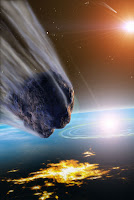Paracelsus
 Paracelsus (born Philippus Aureolus Theophrastus
Bombastus von Hohenheim, 11 November or 17 December 1493 – 24 September 1541)
was a German-Swiss Renaissance physician, botanist, alchemist, astrologer, and
general occultist. He founded the discipline of toxicology. Importantly,
however, he's also known as a revolutionary for insisting upon using
observations of nature, rather than looking to ancient texts, in open and
radical defiance of medical practice of his day. He is also credited for giving
zinc its name, calling it zincum, and for the terms "gas,"
"chemistry," and "alcohol." Modern psychology often also
credits him for being the first to note that some diseases are rooted in psychological
illness.
Paracelsus (born Philippus Aureolus Theophrastus
Bombastus von Hohenheim, 11 November or 17 December 1493 – 24 September 1541)
was a German-Swiss Renaissance physician, botanist, alchemist, astrologer, and
general occultist. He founded the discipline of toxicology. Importantly,
however, he's also known as a revolutionary for insisting upon using
observations of nature, rather than looking to ancient texts, in open and
radical defiance of medical practice of his day. He is also credited for giving
zinc its name, calling it zincum, and for the terms "gas,"
"chemistry," and "alcohol." Modern psychology often also
credits him for being the first to note that some diseases are rooted in psychological
illness.
Paracelsus was born and raised in the village of
Einsiedeln in Switzerland. His father, Wilhelm Bombast von Hohenheim, was a
Swabian (German) chemist and physician. His mother was Swiss; she presumably
died in his childhood.He received a profound humanistic and theological
education by his father, local clerics and the convent school of St. Paul's
Abbey in the Lavanttal.
In 1530, at the instigation of the medical faculty
at the University of Leipzig, the city council of Nürnberg prohibited the
printing of Paracelsus' works.
He then wandered Europe, Africa and Asia Minor in
the pursuit of hidden knowledge. He revised old manuscripts and wrote new ones
but had trouble finding publishers. In 1536, his Die grosse Wundartznei (The
Great Surgery Book) was published and enabled him to regain fame. Paracelsus'
contributions to medicine can be seen in the context of the birth of
Lutheranism. He was a contemporary of Copernicus, Da Vinci, and Martin Luther.
He used to
treat miners then e understood that real cause of disease is not some imbalance
humour but an external source.. He called it ‘seeds’ which is the basic of
disease causing organisms
Paracelsus pioneered the use of chemicals and
minerals in medicine. His hermetical views were that sickness and health in the
body relied on the harmony of man (microcosm) and Nature (macrocosm). He took
an approach different from those before him, using this analogy not in the
manner of soul-purification but in the manner that humans must have certain
balances of minerals in their bodies, and that certain illnesses of the body
had chemical remedies that could cure them. (Debus & Multhauf, p. 6-12).
As a result of this hermetical idea of harmony, the
universe's macrocosm was represented in every person as a microcosm. According
to the insights at the time, there were Seven planets in the sky, Seven metals
on Earth and Seven centers (or major organs) in Man — seven was a special
number. Everything was heavenly and closely interrelated .He died on 24 September
1541.
FINALLY HE MUST BE CALLED THE FATHER OF MODERN MEDICINE.





